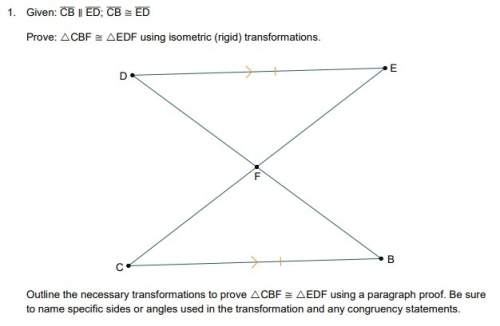
Mathematics, 28.11.2019 00:31 bermudezs732
The motion of a set of particles moving along the x-axis is governed by the differential equation dx/dt=t^3-x^3 where x(t) denotes the position at time t of the particle. a. if a particle is located at x=1 when t=2, what is its velocity at this time? b. show that the acceleration of a particle is given by d^2x/dt^2=3t^2-3t^3x^2+3x^5 c. if a particle is located at x=2 when t=2.5, can it reach the location x=1 at any later time? (hint: t^3-x^3=(t-x)(t^2+xt+x^2)

Answers: 1


Another question on Mathematics

Mathematics, 21.06.2019 14:40
Sara sells beaded necklaces she makes a profit of 4 dollars pn every neclace she sells which table represents the profit sara makes
Answers: 1

Mathematics, 21.06.2019 17:00
The table shows the webster family’s monthly expenses for the first three months of the year. they are $2,687.44, $2,613.09, and $2,808.64. what is the average monthly expenditure for all expenses?
Answers: 1

Mathematics, 21.06.2019 18:10
What is the equation in slope-intercept form of the linear function represented by the table? y -18 -1 -8 4 2 912 o y=-2x-6 o y=-2x+6 o y=2x-6 o y = 2x+6
Answers: 1

Mathematics, 21.06.2019 21:00
Circle a has a diameter of 7 inches, a circumference of 21.98 inches, and an area of 38.465 square inches. the diameter of circle b is 6 inches, the circumference is 18.84 inches, and the area is 28.26 square inches. part a: using the formula for circumference, solve for the value of pi for each circle. (4 points) part b: use the formula for area and solve for the value of pi for each circle. (4 points)
Answers: 2
You know the right answer?
The motion of a set of particles moving along the x-axis is governed by the differential equation dx...
Questions

Mathematics, 20.09.2020 14:01

Mathematics, 20.09.2020 14:01





Chemistry, 20.09.2020 14:01



Mathematics, 20.09.2020 14:01

Chemistry, 20.09.2020 14:01

Mathematics, 20.09.2020 14:01



Biology, 20.09.2020 14:01


Mathematics, 20.09.2020 14:01

Chemistry, 20.09.2020 14:01


 gives the velocity at any point
gives the velocity at any point  , so you need only plug these values in:
, so you need only plug these values in:
![\dfrac{\mathrm d^2x}{\mathrm dt^2}=\dfrac{\mathrm d}{\mathrm dt}\left[\dfrac{\mathrm dx}{\mathrm dt}\right]](/tpl/images/0393/9403/fad36.png)
![=\dfrac{\mathrm d}{\mathrm dt}[t^3-x^3]](/tpl/images/0393/9403/ccdcf.png)



 , we require that
, we require that  be decreasing for some value of
be decreasing for some value of  . In other words,
. In other words, 
 or
or  , but not both.
, but not both. , in the first case you have
, in the first case you have  . But this isn't possible, since
. But this isn't possible, since  (time) must always be growing in the positive direction.
(time) must always be growing in the positive direction.




